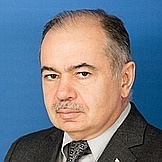Regional flags and emblems


PROFILE
Established 20 January 1921 as the Dagestan Autonomous Soviet Socialist Republic
Dagestan Soviet Socialist Republic since 17 September 1991
The Republic of Dagestan since 17 December 1991
Capital Makhachkala
The Republic of Dagestan is part of the North Caucasus Federal District
Area 50,300 sq km
Population 3 259 000 (2025)
Ethnic groups
(2020 National Census, %)
Avar – 30,53
Dargin – 16,63
Kumyk – 15,84
Lezgin – 13,30
Lak – 5,19
Tabasaran – 4,03
Azerbaijani – 3,73
Russian – 3,26
Chechen – 3,17
Nogai – 1,18
Other – 3,14
The Republic of Dagestan is the most ethnically diversified region in the Russian Federation, with representatives of various nationalities, ethnic groups and three language groups.
Administrative divisions (2024)
Municipal districts – 41
City districts – 10
Rural towns – 7
Rural districts – 701
Inner-city districts – 3
Geography and climate
The republic is located in the eastern part of the North Caucasus. The northern part is mostly lowlands, the southern is piedmont and mountains, the Big Caucasus. The eastern part borders on the Caspian Sea (the coast is 350 km long).
The republic borders the Republic of Kalmykia, the Chechen Republic and the Stavropol Territory as well as Azerbaijan and Georgia. It also has water borders (via the Caspian Sea) with Kazakhstan, Turkmenistan, Azerbaijan and the Islamic Republic of Iran.
There are four types of terrain in the region: lowlands, piedmont, mountains and high-altitude areas. The region has no equal in Russia in terms of diversity of plant and climatic zones: starting from subtropics at the mouth of the Samur River, deserts and semi-deserts in the north to high-altitude tundra, glaciers and alpine grasses.
The republic has a moderate continental climate, usually dry. The coldest month is January. The average January temperature is −0.3°С. Average July temperatures reach an average of +22.8°С.
The region is home to several federal protected natural sites: the Dagestan State Nature Reserve, Samursky National Park, three state nature sanctuaries (Agrakhansky, Tlyaratinsky and Samursky), and two botanical gardens. There are also regional protected natural sites: 12 state nature sanctuaries, four nature parks, 28 natural landmarks, and the Sulakskaya Laguna barrier-lagoon complex.
Government
The legislative branch is the People’s Assembly – Parliament of the Republic of Dagestan, which is the permanent, supreme, representative and only body of legislative authority in the region.
The People’s Assembly has 90 deputies elected for five years in the single-number constituency, in proportion to the number of votes cast for the candidates.
The current People’s Assembly of the Republic of Dagestan was elected in September 2021. The term expires in September 2026.
The executive branch is the Government of the Republic of Dagestan as well as other local executive authorities.
The Head of the Republic of Dagestan is the republic’s highest-ranking official, who heads its executive branch and directs the Government of the Republic of Dagestan. Members of the republic’s People’s Assembly elect the Head of the Republic of Dagestan for a five-year term. The term of the current Head of the Republic expires in October 2026.
The Government of the Republic of Dagestan is the supreme permanent body of executive authority in the republic. Formed by the Head of the Republic of Dagestan and it is responsible to his/her authority. The Government of the Republic of Dagestan heads the executive branch of the republic. The Head of the Republic appoints the Prime Minister of the Republic of Dagestan with the consent of the People’s Assembly of the Republic of Dagestan. The Prime Minister organizes the work of the Government and is personally responsible to the Head of the Republic of Dagestan for the implementation of the powers assigned to him.
Economy and natural resources
The economy of the Republic of Dagestan is multi-industrial and specialises in agro-industrial development.
The agro-industrial sector, construction, manufacturing, transport, communications and trade play the main role in the gross regional product (GRP) and the region’s tax income.
Industry’s share in the GRP is about 15%. The leading role belongs to manufacturing (more than 60% of shipped goods and services, followed by power, gas and water distribution (about 30%) and raw materials extraction (over 6%).
Despite structural changes in the industry, food processing remains the main industrial sector with products widely known not only in Russia but also abroad (Kizlyar Cognac Company, Sparking Wine Derbent Plant, Derbent Cognac Plant and Deneb).
Machine building and metal processing centres are located in Makhachkala, Izberbash, Kizlyar and Khasavyurt (Dagdizel Plant, Aviaagregat, Fine Mechanics Caspian Plant, Gadzhiyev Plant and KEMZ Group). The Russian defence industry occupies an important place in the region’s machine building sector.
Electricity, gas and water production and distribution are based on the energy complex with hydropower plants (Chirkeyskaya, Irganayskaya, Miatlinskaya, Chiryutskaya and Gotsanlinskaya), heating power plants (Caspian and Makhachkala) and combined heat power plants. The republic fully meets its demands for electricity. Non-traditional renewable energy sources are used in the industry, such as geothermal, wind, solar and biological energy. Gasification in the region is over 80%.
The extraction of mineral resources is based on known oil and gas fields, non-ferrous metals (Kizil-Dere Mine) as well as construction materials (stone, quartz and glass sand, other sand and gravel mix and clays). The shelf of the Caspian Sea is an important reserve for hydrocarbons.
In addition to the main industries, construction materials, timber and chemical industries (fiberglass, mineral fertilisers and coatings) are well-developed in Dagestan.
The agro-industrial sector accounts for not more than 20% of the GRP. Dagestan is an ancient centre of terrace agriculture and livestock breeding.
Favourable climatic conditions in the region provide for agricultural development and specialisation in sheep and horse breeding as well as grape, fruit and vegetable gardening. Goat breeding is important in agriculture.
Cereals (rye, grain and corn), fruit, berry and potato as well as meat, dairy, wool, leather and egg production are the main agricultural spheres. Selective seed breeding has been actively developed recently.
The favourable geographic location of the Republic of Dagestan plays an important role in the international and Eurasian transport route system thanks to Caspian Sea access. Dagestan has direct access to international transport routes and provides for Russia’s economic ties with the Trans-Caucasus, Central Asia, Kazakhstan, Turkey and Iran. It also has the potential to be a transit corridor for international routes between the Middle East and Europe. The transport sector accounts for 7% of the GRP, and transit volumes through the republic are increasing. The Makhachkala Sea Trade Port, Makhachkala International Airport “Uytash”, the railways, highways and pipelines are all parts of the transport and logistics sector.
Tourism and recreation are also among priorities in developing the republic’s economy. There is no place like Dagestan in Eurasia in terms of quality and quantity of climate and balneal resources in a relatively small area. The regional geothermal waters have a medicinal quality that surpasses that of other internationally renowned resorts. The Talgi Resort is the only balneal resort in the world based on sulfidic-heavy waters with hydrogen sulfides. The Talgi spring is unrivaled in Europe in terms of quality. The quality of water makes it possible to treat people with skin, gynecological and neurological diseases as well as the musculoskeletal system diseases.
Retail trade, the shoe industry and artisanal crafts are traditional areas in the region’s economy.
Culture and tourism
Dagestan offers a unique multitude of peoples and ethnic groups where all peoples have preserved their historical traditions, folklore, crafts and linguistic image. Many archeological, historical and mountain cultural landmarks help in developing domestic and international tourism.
Dagestan has more than 6,000 historical and cultural monuments, with over 170 federal monuments, five of which are included on the UNESCO list of world heritage sites: the Derbent Wall, the Derbent Lighthouse, the Dzhuma Mosque, the Naryn Kala part of the Derbent Fortress and the Armenian Church of the All-Saviour.
The diverse art and artisanal crafts of Dagestan are famous beyond the region. There are master goldsmiths from Kubachi, jewelers from Gotsatl, potters from Balkhar, woodworkers from Untsukul and carpet-makers from South Dagestan who are well-known and praised at world exhibitions and fairs. Their works are the most recognised and famous trademark of Dagestan.
The swimming season at the Caspian Sea lasts up to 140 days. There are about 160 tourist camps, guest houses, health resorts and children’s camps along the coast.
Dagestan’s unique climate and landscape provide for the development of alpine tourism.


